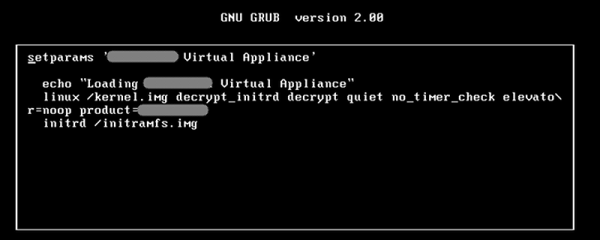Fix stuff, earn big awards? Maybe, if this idea for repair bounties takes off. The group is dubbed the FULU Foundation, for “Freedom from Unethical Limitations on Users,” and was co-founded by right-to-repair activist Kevin O’Reilly and perennial Big Tech thorn-in-the-side Louis Rossman. The operating model works a bit like the bug bounty system, but in reverse: FULU posts cash bounties on consumer-hostile products, like refrigerators that DRM their water filters or bricked thermostats. The bounty starts at $10,000, but can increase based on donations from the public. FULU will match those donations up to $10,000, potentially making a very rich pot for the person or team that fixes the problem.
bug bounty11 Articles
OpenAI Releases Gpt-oss AI Model, Offers Bounty For Vulnerabilities
OpenAI have just released gpt-oss, an AI large language model (LLM) available for local download and offline use licensed under Apache 2.0, and optimized for efficiency on a variety of platforms without compromising performance. This is their first such “open” release, and it’s with a model whose features and capabilities compare favorably to some of their hosted services.
OpenAI have partnered with ollama for the launch which makes onboarding ridiculously easy. ollama is an open source, MIT-licensed project for installing and running local LLMs, but there’s no real tie-in to that platform. The models are available separately: gpt-oss-20b can run within 16 GB of memory, and the larger and more capable gpt-oss-120b requires 80 GB. OpenAI claims the smaller model is comparable to their own hosted o3-mini “reasoning” model, and the larger model outperforms it. Both support features like tool use (such as web browsing) and more.
LLMs that can be downloaded and used offline are nothing new, but a couple things make this model release a bit different from others. One is that while OpenAI have released open models such as Whisper (a highly capable speech-to-text model), this is actually the first LLM they have released in such a way.
The other notable thing is this release coincides with a bounty challenge for finding novel flaws and vulnerabilities in gpt-oss-20b. Does ruining such a model hold more appeal to you than running it? If so, good news because there’s a total of $500,000 to be disbursed. But there’s no time to waste; submissions need to be in by August 26th, 2025.
Bats Can No Longer Haunt Apple VR Headsets Via Web Exploit
Bug reporting doesn’t usually have a lot of visuals. Not so with the visionOS bug [Ryan Pickren] found, which fills a user’s area with screeching bats after visiting a malicious website. Even better, closing the browser doesn’t get rid of them! Better still? Doesn’t need to be bats, it could be spiders. Fun!
The bug has been fixed, but here’s how it worked: the Safari browser build for visionOS allowed a malicious website to fill the user’s 3D space with animated objects without interaction or permission. The code to trigger this is remarkably succinct, and is actually a new twist on an old feature: Apple AR Quick Look, an HTML-based feature for rendering 3D augmented reality content in Safari.

Leveraging this old feature is what lets an untrusted website launch an arbitrary number of animated 3D objects — complete with sound — into a user’s virtual space without any interaction from the user whatsoever. The icing on the cake is that Quick Look is a separate process, so closing Safari doesn’t get rid of the pests.
Providing immersive 3D via a web browser is a valuable way to deliver interactive content on both desktops and VR headsets; a good example is the fantastic virtual BBC Micro which uses WebXR. But on the Apple Vision Pro the user is always involved and there are privacy boundaries that corral such content. Things being launched into a user’s space in an interaction-free way is certainly not intended behavior.
The final interesting bit about this bug (or loophole) was that in a way, it defied easy classification and highlights a new sort of issue. While it seems obvious from a user experience and interface perspective that a random website spawning screeching crawlies into one’s personal space is not ideal, is this a denial-of-service issue? A privilege escalation that technically isn’t? It’s certainly unexpected behavior, but that doesn’t really capture the potential psychological impact such bugs can have. Perhaps the invasion of personal space and user boundaries will become a quantifiable aspect of bugs in these new platforms. What fun.
Hackaday Links: January 28, 2024
From the “No good deed goes unpunished” files, this week came news of a German programmer who probably wishes he had selected better clients. According to Heise Online (English translation), a freelance programmer — referred to only as “defendant” in the article — was retained by a company to look into a database problem in their system. His investigation revealed that the customer’s database was being filled with log messages from a third-party service called Modern Solution GmbH & Co. KG. over a MySQL connection to a remote server. Assuming this connection was dedicated for his client’s use, the programmer looked at the executable used to make the connection with a text editor, which revealed a password in plain text. Upon connecting to the remote database, he found that it not only contained data for all of Modern Solution’s customers, but also data for all the end users of their customers.
Realizing he’d unintentionally wandered into verboten territory, the programmer immediately backed out and contacted Modern Solutions. They quickly fixed the issue, and then just as quickly reported him to the police. Their “investigation” revealed that the programmer had “decompiled” the executable to obtain the password, in violation of German law. The judge agreed, stating that merely looking at and using the password constituted a criminal offense, regardless of intent and despite the fact that Modern Solution had provided the password to the programmer’s client when they sold them the software. The upshot of all of this nonsense? A €3,000 fine for the programmer, if the verdict stands on appeal. It could have been worse, though; German law allows for up to three years in prison for such offenses.
U.S Air Force Is Going To Get Hacked
[HackerOne] has announced that US Dept of Defense (DoD) has decided to run their biggest bug bounty program ever, Hack the Air force.
You may remember last year there was the Hack the Pentagon bug bounty program, Well this year on the coattails of last year’s success the DoD has decided to run an even bigger program this year: Hack The Air force. Anyone from “The Five Eyes” countries (Australia, Canada, New Zealand, the United Kingdom and of course the United States) can take part. This is a change in format from the Pentagon challenge which was only open to U.S citizens and paid out a total of around $75,000 in bug bounties.
Now obviously there are rules. You can’t just hack The Air Force no matter how much you want “All their base are belong to you”. The DoD want computer hackers to find bugs in their public facing web services and are not so much interested in you penetration testing their weapons systems or any other critical infrastructure. Try that and you may end up with a lovely never-ending tour of Guantanamo Bay Naval Base.
ESP32’s Dev Framework Reaches 2.0
We’ve been watching the development of the ESP32 chip for the last year, but honestly we’ve been a little bit cautious to throw all of our friendly ESP8266s away just yet. Earlier this month, Espressif released version 2.0 of their IoT Development Framework (ESP-IDF), and if you haven’t been following along, you’ve missed a lot.
We last took a serious look at the IDF when the chips were brand-new, and the framework was still taking its first baby steps. There was no support for such niceties as I2C and such at the time, but you could get both cores up and running and the thing connected to the network. We wanted to test out the power-save modes, but that wasn’t implemented yet either. In short, we were watching the construction of a firmware skyscraper from day one, and only the foundation had been poured.
But what a difference eight months make! Look through the GitHub changes log for the release, and it’s a totally new ballgame. Not only are their drivers for I2C, I2S, SPI, the DAC and ADCs, etc, but there are working examples and documentation for all of the above. Naturally, there are a ton of bugfixes as well, especially in the complex WiFi and Bluetooth Low Energy stacks. There’s still work left to do, naturally, but Espressif seems to think that the framework is now mature enough that they’ve opened up their security bug bounty program on the chip. Time to get hacking!
Hacking A Device That Lives Inside The Matrix
[Gerardo Iglesias Galván] decided he wanted to try his hand at bug-bounty hunting — where companies offer to pay hackers for finding vulnerabilities. Usually, this involves getting a device or accessing a device on the network, attacking it as a black box, and finding a way in. [Gerrado] realized that some vendors now supply virtual images of their appliances for testing, so instead of attacking a device on the network, he put the software in a virtual machine and attempted to gain access to the device. Understanding the steps he took can help you shore up your defenses against criminals, who might be after more than just a manufacturer’s debugging bounty.
Continue reading “Hacking A Device That Lives Inside The Matrix”
















